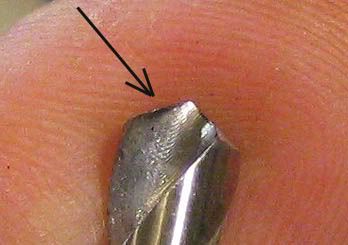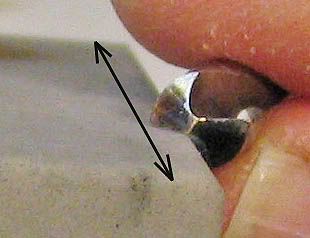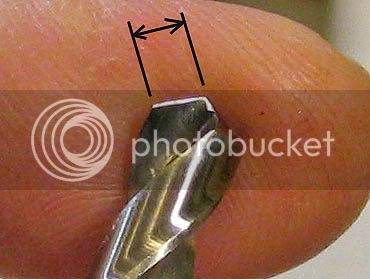Hi all;
After quite a bit of deciding and un-deciding on what I want to build for my next engine, I finally made the choice of one of Rudy Kouhoupt's engines. I've always liked Rudy's work, but have only built one of his projects in the past.
Settling on something to use my free time on sometimes seems to take half an age, for me. I work in the shop most days, but not always on something that is just for fun, like an engine. I usually work from my own scribbles, and having nice prints, as Rudy always drew, is kind of nice!
So, here's the start of the project. This engine is one that was featured in one of his books, and I think also in a machinists magazine. The prints are copyrighted, so I can't put them here, but if you want to build this engine, it's in his first "Shop Wisdom" book. He didn't give it a catchy name, like some builders do. He just called it "A Horizontal Stationary Engine".

The first thing I'll make is the base and sub base. To start, the ends are milled off square to clean up my hack saw marks. The sub base is thinner and will be a little wider than the base, and both pieces need to be milled to width. Since the sub base is too thin to mill unsupported, I clamped them both together for this step. Being thicker, the base provides extra support needed for milling the two. When the sub base is brought to size, it's removed from the sandwich, and the base is milled further to bring it to the proper width. The piece of scrap metal near the moveable jaw is just for a little extra support for the whole thing.

When the base has been brought to size, it's time to drill it full of holes. The holes can be laid out using a scribe and straight edge, but I usually find that if I have a lot to do it's better to center spot them all using coordinates on the milling machine. The letters marked on the piece are to remind me of the different hole sizes needed. The X on the left end of the piece is to mark my reference edge.

Next the base with the spotted holes is clamped to the sub base, and while drilling the holes through the base, the sub base gets its holes spotted at the same time, except for a few that are outside the dimensions of the base.

Now all the holes that are to be threaded are tapped. I use a tapping block anytime I can, especially when tapping small holes, like 2-56, or even up to size 8. It keeps the tap straight in the hole. Starting a tap crooked is probably the best way to break one. All you need for one is shown in the picture above. Just drill through holes in a disc for the sizes of whatever taps you are worried about breaking, (which is to say, all small ones!).
For aluminum, I use paraffin wax instead of a tapping fluid. It makes a big difference in the tapping effort, which means less torque on those tiny taps that break so easily. Just rub the threads of the tap on it to fill the flutes. Also, it doesn't leave a mess to clean up, like liquid tapping juice.

Since the next step for the base and sub base is to mill away the contours, the crank throw slot, and the exhaust slot, the pieces will need some kind of support that holds them up above the top of the milling vise, or off the milling table, depending on how you do things. A cheap source of sacrificial packing for jobs like this is wood. Here, a piece of dimensioned poplar is being tapped for screws that will go through the base pieces to hold each one securely to the piece of wood. Most types of wood that are not too soft will take threaded holes just like metal, and they're really easy to tap. As long as the wood will hold the threads without stripping out under moderate tightening, it will work fine.
Wood screws work better, of course, but you can't always find the tiny sizes needed if all you have is small holes in your work piece.

Here you can see how well the wooden packing piece works. The contours have been milled away in the base.

And here the crank throw slot has been milled out. When all the milling is done on the two base pieces, the piece of wood can be fly cut to use another day, or can just be tossed in the fireplace. When your jig pieces only cost 25 cents, you don't feel so bad about using them!
Similar milling is done to the sub base, and is basically the same thing as just done here, so I won't show that piece.

So, here are the two base pieces, drilled 'n milled, and just needing a little filing and sanding to finish them up.
I deviated from Rudy's prints a little out of necessity. The sub base was made from slightly thicker material because that's what I had on hand. The crank throw slots were made square bottomed because I didn't have a large enough end mill to make them fully radiused. If it happens that the crank throw slots need the radius later on for some functional reason, I'll file them out at that time.
Well, that's the start of it. Maybe I'll get a little more done tomorrow. Depends on work...
Dean
After quite a bit of deciding and un-deciding on what I want to build for my next engine, I finally made the choice of one of Rudy Kouhoupt's engines. I've always liked Rudy's work, but have only built one of his projects in the past.
Settling on something to use my free time on sometimes seems to take half an age, for me. I work in the shop most days, but not always on something that is just for fun, like an engine. I usually work from my own scribbles, and having nice prints, as Rudy always drew, is kind of nice!
So, here's the start of the project. This engine is one that was featured in one of his books, and I think also in a machinists magazine. The prints are copyrighted, so I can't put them here, but if you want to build this engine, it's in his first "Shop Wisdom" book. He didn't give it a catchy name, like some builders do. He just called it "A Horizontal Stationary Engine".

The first thing I'll make is the base and sub base. To start, the ends are milled off square to clean up my hack saw marks. The sub base is thinner and will be a little wider than the base, and both pieces need to be milled to width. Since the sub base is too thin to mill unsupported, I clamped them both together for this step. Being thicker, the base provides extra support needed for milling the two. When the sub base is brought to size, it's removed from the sandwich, and the base is milled further to bring it to the proper width. The piece of scrap metal near the moveable jaw is just for a little extra support for the whole thing.

When the base has been brought to size, it's time to drill it full of holes. The holes can be laid out using a scribe and straight edge, but I usually find that if I have a lot to do it's better to center spot them all using coordinates on the milling machine. The letters marked on the piece are to remind me of the different hole sizes needed. The X on the left end of the piece is to mark my reference edge.

Next the base with the spotted holes is clamped to the sub base, and while drilling the holes through the base, the sub base gets its holes spotted at the same time, except for a few that are outside the dimensions of the base.

Now all the holes that are to be threaded are tapped. I use a tapping block anytime I can, especially when tapping small holes, like 2-56, or even up to size 8. It keeps the tap straight in the hole. Starting a tap crooked is probably the best way to break one. All you need for one is shown in the picture above. Just drill through holes in a disc for the sizes of whatever taps you are worried about breaking, (which is to say, all small ones!).
For aluminum, I use paraffin wax instead of a tapping fluid. It makes a big difference in the tapping effort, which means less torque on those tiny taps that break so easily. Just rub the threads of the tap on it to fill the flutes. Also, it doesn't leave a mess to clean up, like liquid tapping juice.

Since the next step for the base and sub base is to mill away the contours, the crank throw slot, and the exhaust slot, the pieces will need some kind of support that holds them up above the top of the milling vise, or off the milling table, depending on how you do things. A cheap source of sacrificial packing for jobs like this is wood. Here, a piece of dimensioned poplar is being tapped for screws that will go through the base pieces to hold each one securely to the piece of wood. Most types of wood that are not too soft will take threaded holes just like metal, and they're really easy to tap. As long as the wood will hold the threads without stripping out under moderate tightening, it will work fine.
Wood screws work better, of course, but you can't always find the tiny sizes needed if all you have is small holes in your work piece.

Here you can see how well the wooden packing piece works. The contours have been milled away in the base.

And here the crank throw slot has been milled out. When all the milling is done on the two base pieces, the piece of wood can be fly cut to use another day, or can just be tossed in the fireplace. When your jig pieces only cost 25 cents, you don't feel so bad about using them!
Similar milling is done to the sub base, and is basically the same thing as just done here, so I won't show that piece.

So, here are the two base pieces, drilled 'n milled, and just needing a little filing and sanding to finish them up.
I deviated from Rudy's prints a little out of necessity. The sub base was made from slightly thicker material because that's what I had on hand. The crank throw slots were made square bottomed because I didn't have a large enough end mill to make them fully radiused. If it happens that the crank throw slots need the radius later on for some functional reason, I'll file them out at that time.
Well, that's the start of it. Maybe I'll get a little more done tomorrow. Depends on work...
Dean






















































































